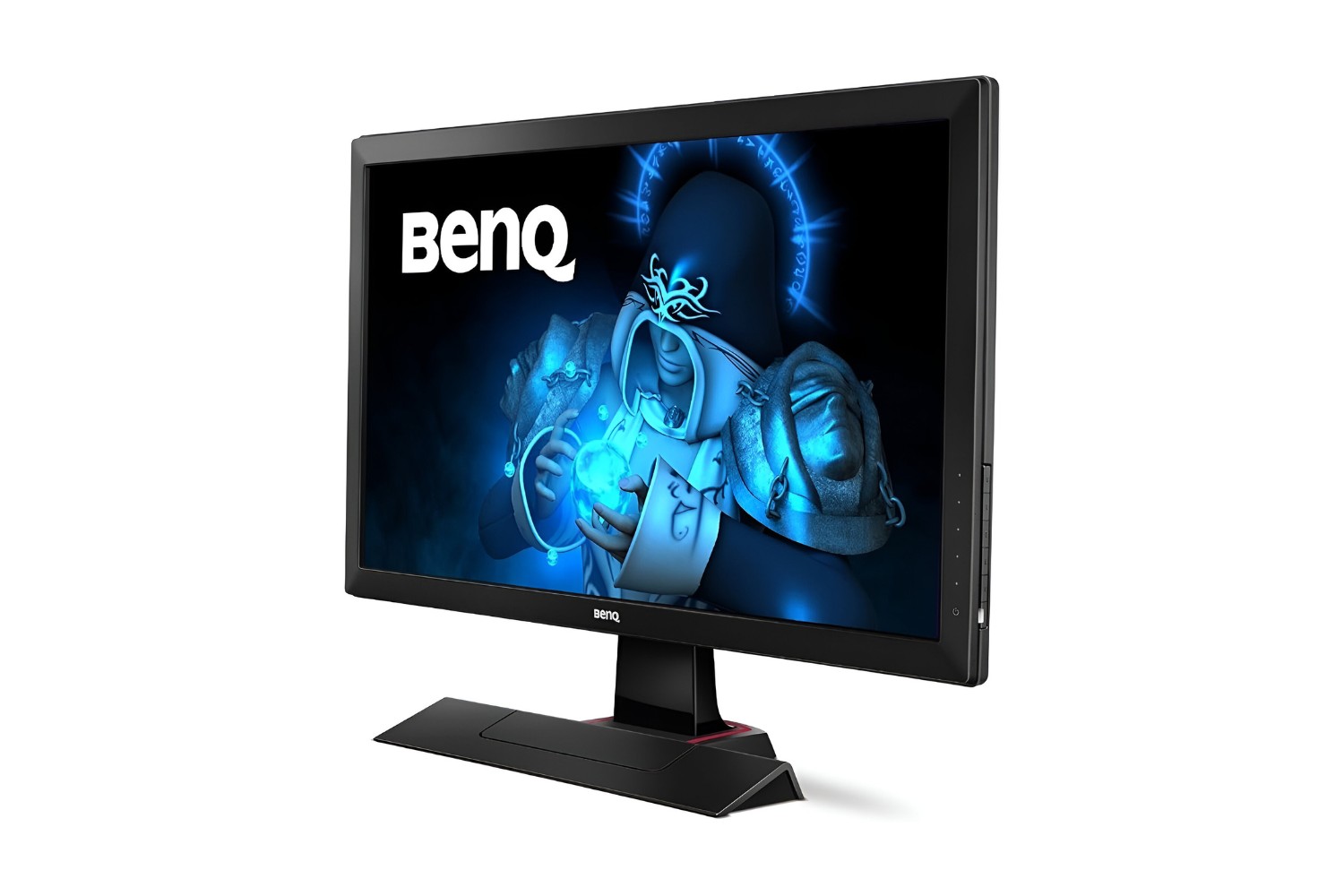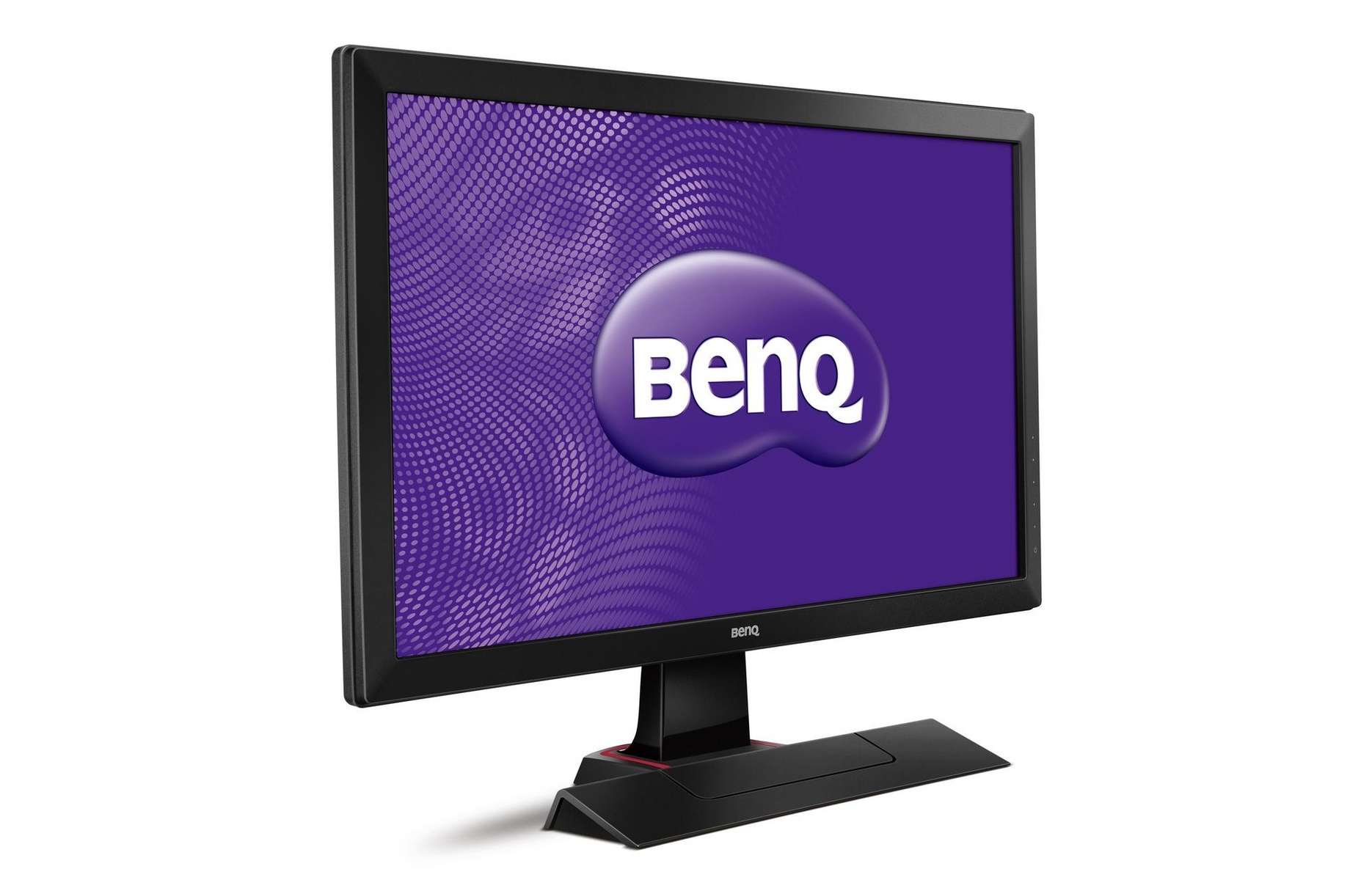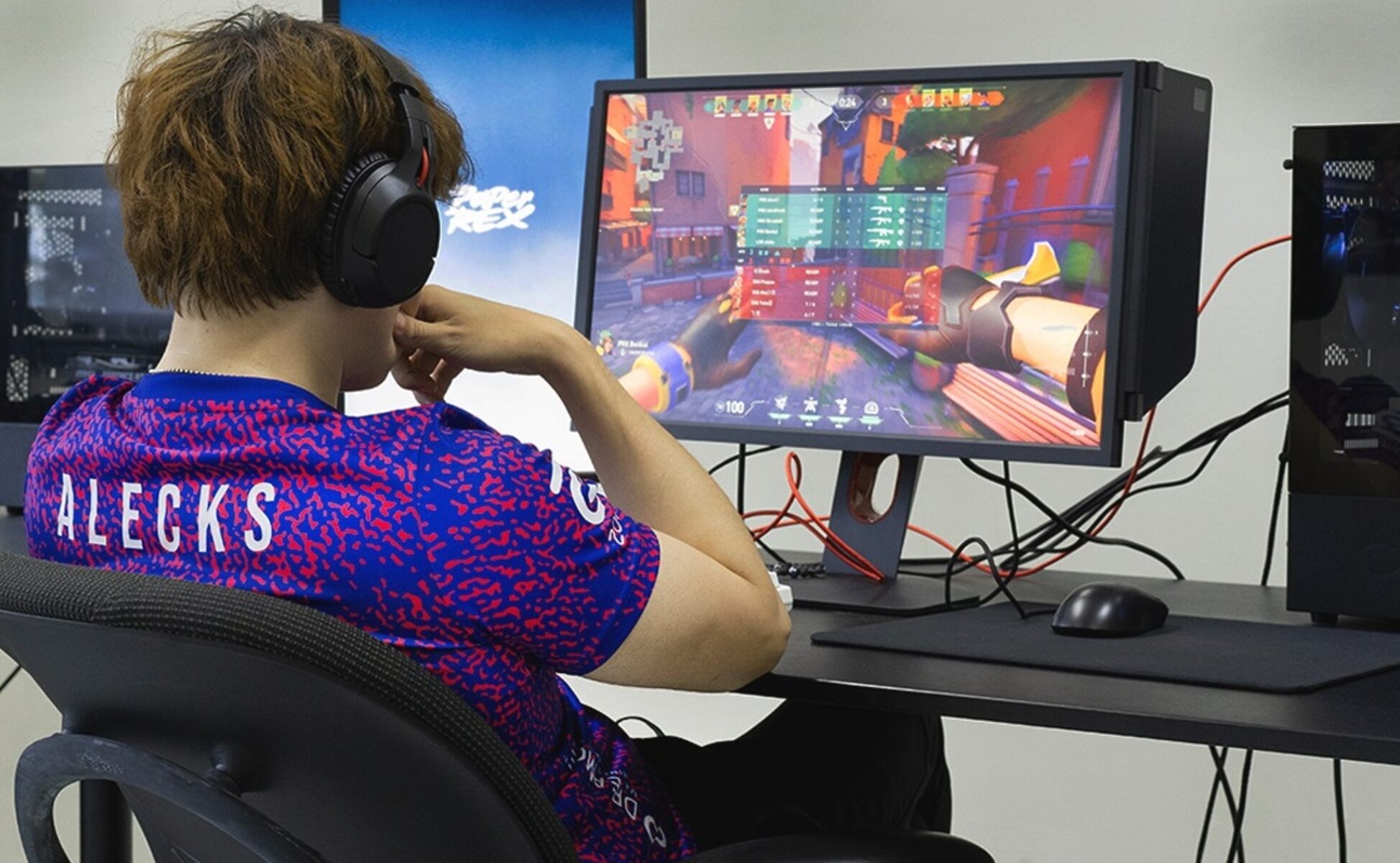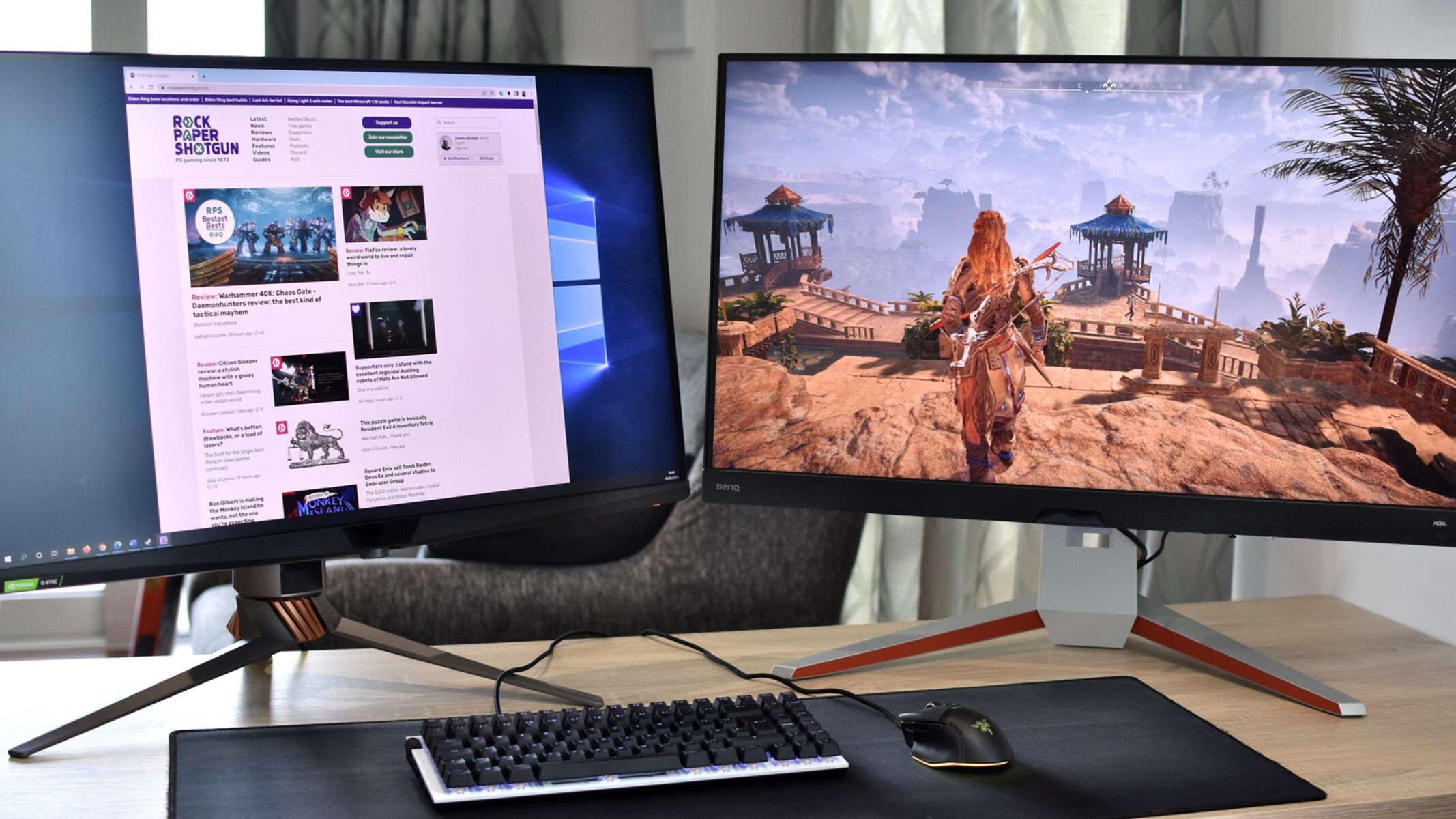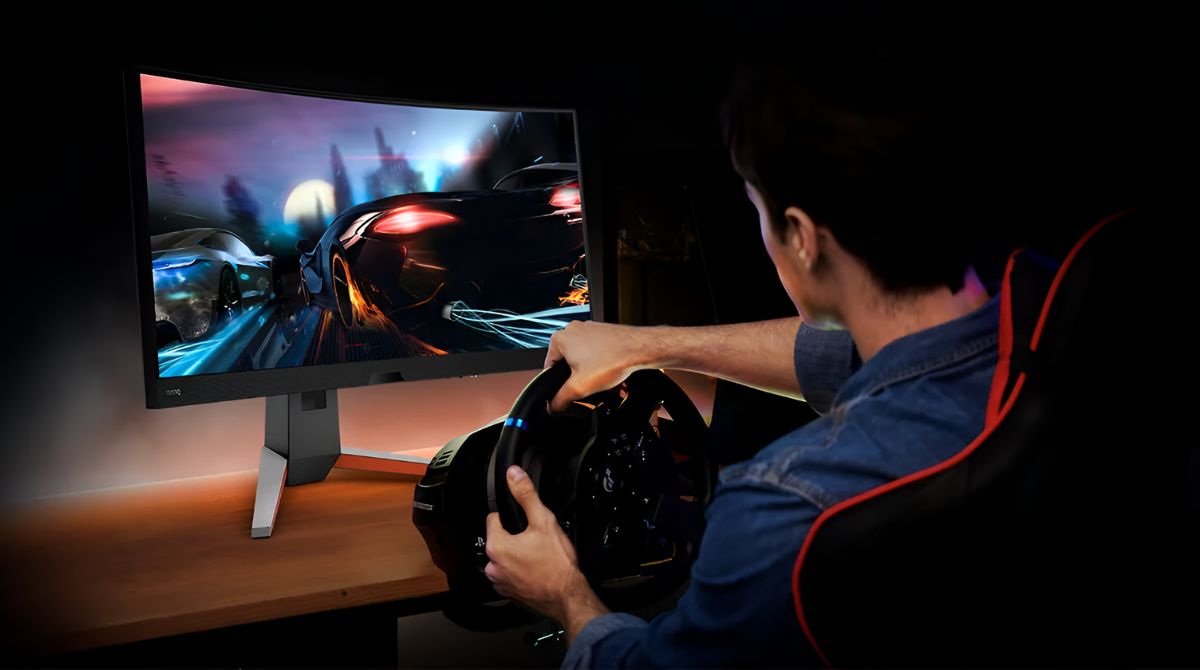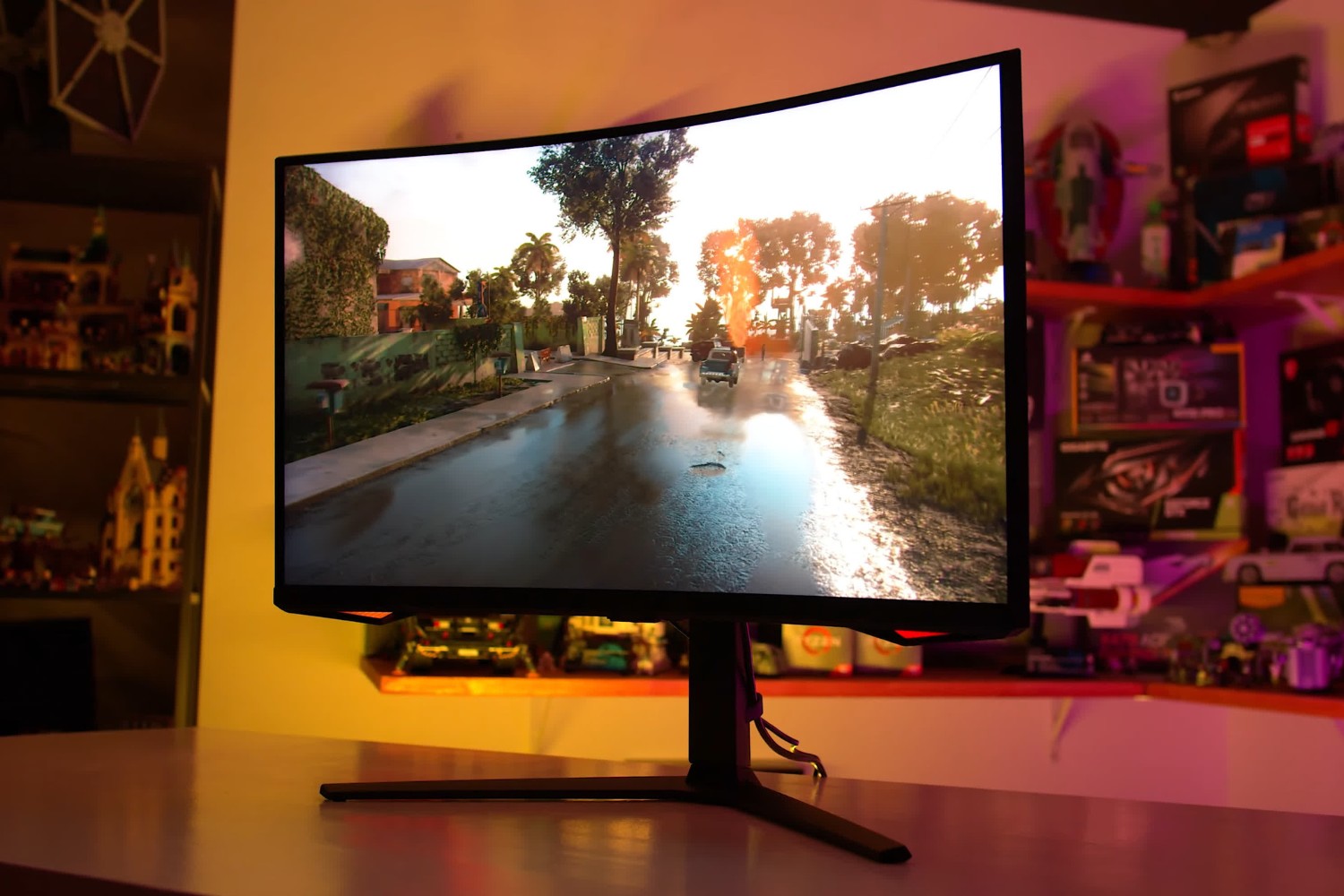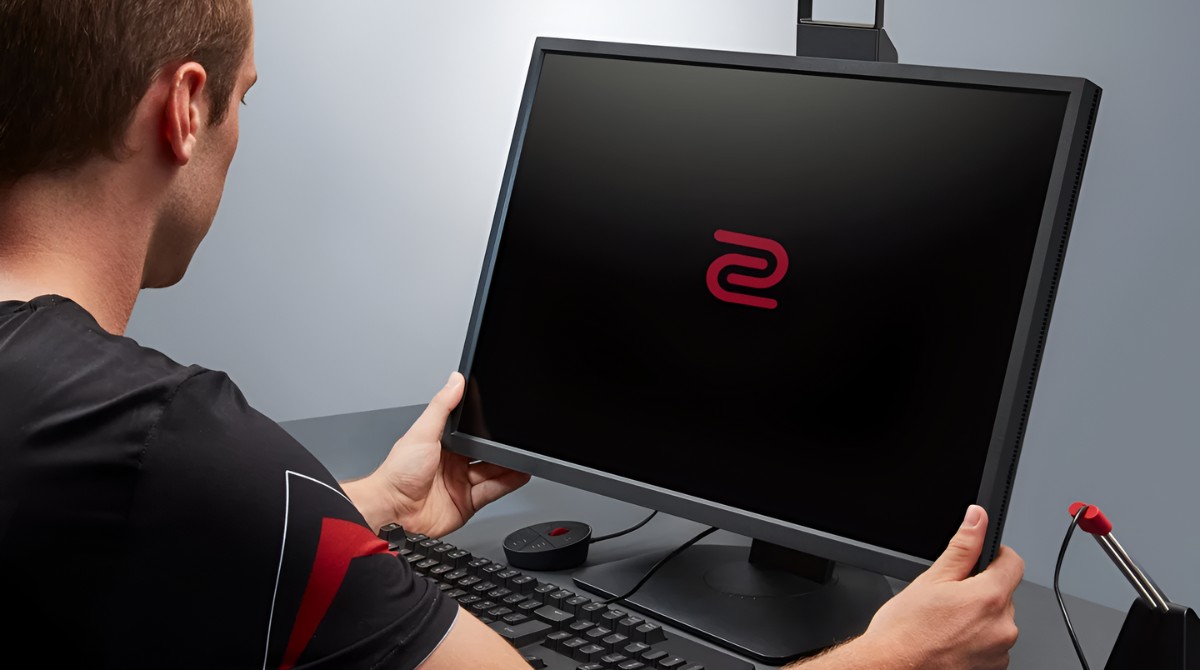Introduction
When it comes to gaming, a high frame rate can make all the difference in your overall gameplay experience. It ensures smooth and fluid motion, reducing input lag and enhancing immersion. If you own a BenQ RL gaming monitor and find yourself wanting to increase your frame rate, then you’ve come to the right place.
BenQ is well-known for its high-quality gaming monitors, and the RL series is specifically designed with gamers in mind. While these monitors already offer impressive performance, there are a few tricks you can employ to maximize your frame rate and take your gaming to the next level.
In this article, we will explore various methods to increase the frame rate on your BenQ RL gaming monitor. From optimizing your display and in-game settings to overclocking your monitor, we will cover all the essential tips and tricks you need to know.
By implementing these strategies, you can gain a competitive edge in your favorite games, enjoy smoother gameplay, and fully immerse yourself in the gaming experience. So, without further ado, let’s dive in and explore the key steps to boost your frame rate on the BenQ RL gaming monitor.
Update Graphics Card Drivers
One of the essential steps to increase your frame rate on a BenQ RL gaming monitor is to ensure that your graphics card drivers are up to date. Graphics card manufacturers regularly release driver updates to optimize performance, fix bugs, and provide better compatibility with the latest games.
Outdated graphics card drivers not only hinder your computer’s overall performance but can also limit the frame rate you can achieve on your gaming monitor. By updating your graphics card drivers, you allow your system to take advantage of the latest optimizations and enhancements, resulting in improved frame rates and smoother gameplay.
To update your graphics card drivers, you first need to identify the make and model of your graphics card. You can do this by opening the Device Manager on your computer, locating the Display Adapters category, and noting down the name of your graphics card.
Once you have this information, you can visit the website of your graphics card manufacturer, such as NVIDIA or AMD, to find the latest driver for your specific card model. These websites usually provide easy-to-follow instructions for downloading and installing the latest driver.
If you prefer a more automated approach, you can also use specialized software tools like NVIDIA GeForce Experience or AMD Radeon Software, which can scan your system, detect outdated or missing drivers, and automatically update them for you. These tools are user-friendly and can simplify the driver update process.
Updating your graphics card drivers not only ensures better performance on your BenQ RL gaming monitor but also fixes issues that may arise while playing certain games. It is recommended to check for driver updates regularly to ensure you are always running the latest version and taking full advantage of your hardware.
Adjust Display Settings
Another way to improve the frame rate on your BenQ RL gaming monitor is by adjusting the display settings. By optimizing the display settings, you can achieve better visuals and reduce any potential bottlenecks that may hinder your frame rate performance.
Start by accessing the settings menu on your BenQ RL gaming monitor. You can usually do this by using the physical buttons on the monitor or through an on-screen display (OSD) menu. Look for options related to brightness, contrast, sharpness, and color settings.
First, adjust the brightness and contrast levels. Finding the right balance between these settings can help enhance the overall clarity and contrast of your gaming visuals. It can also ensure that dark areas are not too dark or washed out and that bright areas are not overly bright or overexposed.
Next, consider the sharpness setting. It’s important to strike a balance here as well. Setting the sharpness too high can result in artificial-looking details and image artifacts, while setting it too low can make the image appear blurry or soft. Experiment with different sharpness levels to find what works best for your gaming needs.
Color settings also play a crucial role in the overall visual experience. Depending on your preference and the type of game you’re playing, you may want to adjust the color temperature, saturation, and hue to enhance the color accuracy or add vibrancy. It’s recommended to refer to calibration guides or presets available for your specific monitor model to ensure accurate and pleasing color representation.
Lastly, make sure that any image enhancement features, such as dynamic contrast or noise reduction, are turned off. While these features may seem appealing, they can often introduce additional processing overhead, which can impact your frame rate. Disabling these features can help reduce any unnecessary processing load on your monitor.
By adjusting the display settings on your BenQ RL gaming monitor, you can ensure that you are getting the best visuals without sacrificing your frame rate performance. Remember to experiment with different settings and find what works best for your gaming preferences and the requirements of the games you play.
Optimize In-Game Settings
Optimizing the in-game settings is one of the most effective ways to increase the frame rate on your BenQ RL gaming monitor. Each game comes with its own set of graphics options that allow you to customize the visual quality and performance. By tweaking these settings, you can find the perfect balance between stunning visuals and a smooth frame rate.
Start by launching the game you want to optimize and navigate to the graphics or video settings menu. Look for options related to resolution, texture quality, anti-aliasing, shadows, and effects. Here are a few key settings to consider:
- Resolution: Lowering the resolution can significantly improve your frame rate. While higher resolutions offer enhanced visual clarity, they require more GPU power to render. Experiment with lower resolutions to find the balance between visual quality and performance.
- Texture Quality: This setting determines the level of detail on in-game textures. Lowering it can lighten the load on your GPU and help increase the frame rate. However, be aware that extremely low texture quality may result in blurry or pixelated visuals.
- Anti-Aliasing: Anti-aliasing smooths out jagged edges to improve visual quality. However, it can be resource-intensive. Depending on your GPU power, consider disabling or lowering the anti-aliasing setting to boost performance.
- Shadows: Shadows can greatly enhance the realism of a game, but they can also impact performance. Consider reducing the shadow quality or disabling them altogether. This can result in a significant frame rate boost without sacrificing too much graphical fidelity.
- Effects: In-game effects like motion blur, depth of field, and ambient occlusion can add visual flair but may also impact performance. Experiment with these settings and find the right balance between visual quality and frame rate.
It’s important to note that every game is different, and what works for one may not work for another. Take the time to experiment with different settings and observe the impact on both visuals and frame rate. Finding the optimal settings for each game can greatly enhance your gaming experience on the BenQ RL monitor.
Additionally, some games also offer presets or performance modes designed specifically for low-end systems. These presets automatically adjust multiple settings to maximize frame rate while sacrificing some visual quality. Consider using these presets if you have a lower-end GPU or are struggling to achieve satisfactory frame rates.
By optimizing the in-game settings on your BenQ RL gaming monitor, you can achieve the perfect balance between stunning visuals and smooth performance. Take the time to customize these settings for each game to fully enjoy the immersive experience offered by your gaming monitor.
Reduce Background Processes
When it comes to maximizing the frame rate on your BenQ RL gaming monitor, it is essential to minimize the strain on your system’s resources. One significant factor that can impact performance is the number of background processes running on your computer while gaming.
Background processes include applications, services, and other system tasks that are running in the background while you are playing a game. These processes consume valuable system resources such as CPU, memory, and disk usage, which can result in decreased frame rates and overall performance.
To optimize your gaming experience, it is recommended to reduce the number of background processes as much as possible. Here are a few steps you can take to accomplish this:
- Close Unnecessary Applications: Before starting your gaming session, make sure to close any unnecessary applications running in the background. This includes web browsers, music or video players, software updaters, and other non-essential programs. Every closed application frees up system resources that can be allocated to your game.
- Disable Startup Programs: Many applications have a setting that allows them to start automatically when your computer boots up. These programs continue running in the background even when you’re not using them. Disable or remove any unnecessary startup programs to reduce the strain on your resources.
- Manage System Services: In addition to applications, certain system services also run in the background. Some of these services may not be necessary for gaming and can be disabled or set to manual startup. Exercise caution when modifying system services, as disabling essential services can cause system instability.
- Use a Gaming Mode or Game Boost: Some computers or system optimization software offer a dedicated gaming mode or game boost feature. This functionality temporarily disables non-essential processes and services, prioritizing system resources for the game. Activating this mode can help improve frame rates by diverting more resources to your game.
Reducing background processes frees up system resources, allowing your CPU and GPU to focus on delivering smooth and responsive gameplay on your BenQ RL gaming monitor. By minimizing the strain on your system, you can unlock the full potential of your hardware and achieve higher frame rates.
It’s important to note that while reducing background processes can improve performance, some processes are necessary for the proper functioning of your system. Avoid disabling critical system processes or services unless you are confident about the changes you are making.
By minimizing background processes, you can optimize your system’s resources, resulting in improved frame rates and a smoother gaming experience on your BenQ RL gaming monitor.
Enable FreeSync
If your BenQ RL gaming monitor supports FreeSync technology and you have an AMD graphics card, enabling FreeSync can greatly enhance your gaming experience. FreeSync is a technology developed by AMD that eliminates screen tearing and provides a smoother, more fluid gameplay experience.
Screen tearing occurs when there is a mismatch between the frame rate of the game and the refresh rate of the monitor. This can result in a visible horizontal line on the screen, causing a distraction and negatively impacting gameplay. FreeSync dynamically adjusts the monitor’s refresh rate to match the frame rate output by the graphics card, eliminating screen tearing and creating a seamless visual experience.
To enable FreeSync, first, check if your BenQ RL gaming monitor supports this feature. You can usually find this information in the monitor’s specifications or the product documentation. Make sure that your monitor supports FreeSync over the appropriate connection, such as DisplayPort or HDMI.
Next, ensure that you have an AMD graphics card that is compatible with FreeSync. Most newer AMD graphics cards support FreeSync, but it’s always a good idea to double-check the compatibility list on the AMD website or consult your graphics card’s documentation.
Once you have confirmed the compatibility, you need to enable FreeSync in both your graphics card settings and your monitor settings. In your graphics card settings, navigate to the AMD Radeon Software or the AMD Control Panel, depending on your graphics card model. Look for the FreeSync option and enable it.
On your BenQ RL gaming monitor, access the monitor’s on-screen display (OSD) menu and navigate to the settings related to FreeSync. Enable FreeSync in the monitor settings, ensuring it is set to the appropriate mode (standard, extended, or ultimate, depending on the monitor model).
After enabling FreeSync, you should notice a significant improvement in the smoothness of gameplay. FreeSync dynamically adjusts the refresh rate of the monitor to match the frame rate output by your graphics card, creating a seamless and tear-free gaming experience.
If you experience any issues with FreeSync, such as flickering or instability, make sure that you have the latest graphics card drivers installed and check for any firmware updates for your monitor. Additionally, ensure that your monitor’s refresh rate is set to the maximum supported by both the monitor and your graphics card.
By enabling FreeSync on your BenQ RL gaming monitor, you can enjoy an enhanced gaming experience with smoother, tear-free visuals, allowing you to fully immerse yourself in your favorite games.
Overclocking the Monitor
If you’re seeking to push the limits of your BenQ RL gaming monitor’s performance, overclocking can be a viable option. Overclocking involves increasing the refresh rate of the monitor beyond its default settings, which can result in higher frame rates and smoother gameplay.
It’s important to note that not all monitors support overclocking, and overclocking carries certain risks. However, if your BenQ RL gaming monitor offers the option to overclock and you are comfortable with the process, it can provide a noticeable boost in performance.
Before attempting to overclock your monitor, ensure that it supports overclocking and that your graphics card and cable type can handle the increased refresh rate. Common cable types for overclocking are DisplayPort and high-quality HDMI cables.
To overclock your monitor, follow these steps:
- Research Your Monitor: Start by researching your specific BenQ RL gaming monitor model and its overclocking capabilities. Look for user reviews, forum discussions, or official documentation that provide insights into stable overclocking settings.
- Access the Monitor’s On-Screen Display (OSD): Use the physical buttons on your monitor to access the OSD menu. Navigate to the appropriate settings related to overclocking. These settings may be labeled as refresh rate, overclocking, or something similar.
- Gradually Increase the Refresh Rate: Begin by increasing the refresh rate in small increments, such as 5Hz or 10Hz at a time. After each adjustment, test the stability of the monitor by running games or stress-testing software. If artifacts or instability occur, reduce the refresh rate to the previous stable setting.
- Monitor and Adjust for Temperature: Overclocking can increase the temperature of the monitor. Monitor the temperature closely during the testing phase. If the temperature rises significantly and causes stability issues, consider lowering the refresh rate or investing in additional cooling options.
- Test for Stability: After each adjustment, thoroughly test the monitor’s stability by running a variety of games or benchmarking software for an extended period. Look for any visual artifacts, flickering, or other instability issues. If any issues arise, revert to the previous stable setting.
It’s essential to remember that overclocking carries risks, including the potential for damaging or reducing the lifespan of your monitor. Proceed with caution, and always monitor the temperature and stability of your monitor during the overclocking process.
Additionally, keep in mind that individual results may vary, and overclocking success depends on various factors, including the specific monitor model and the quality of your graphics card and cable. While some users achieve significant performance boosts through overclocking, others may not see a substantial difference.
By overclocking your BenQ RL gaming monitor, when done correctly, you may unlock higher refresh rates and achieve smoother gameplay. However, it’s crucial to research and understand the capabilities and limitations of your specific monitor model and carefully monitor its stability and temperature throughout the process.
Conclusion
Optimizing the frame rate on your BenQ RL gaming monitor can greatly enhance your gaming experience, providing smoother gameplay and improved immersion. By following the steps outlined in this article, you can maximize the performance of your monitor and fully unlock its potential.
We started by emphasizing the importance of updating your graphics card drivers to ensure optimal performance. With up-to-date drivers, your system can take advantage of the latest optimizations and fixes, resulting in improved frame rates.
Next, we discussed the significance of adjusting the display settings on your BenQ RL gaming monitor. Tweaking settings such as brightness, contrast, sharpness, and color can improve visual clarity and reduce any potential bottlenecks that may hinder your frame rate performance.
Optimizing in-game settings is another crucial step in increasing the frame rate. By adjusting resolution, texture quality, anti-aliasing, shadows, and effects, you can find the perfect balance between stunning visuals and a smooth frame rate.
Reducing background processes is also essential for maximizing frame rates. Closing unnecessary applications, disabling startup programs, and managing system services can free up valuable system resources, allowing your CPU and GPU to focus on delivering a smoother gaming experience.
If your BenQ RL gaming monitor supports FreeSync technology, enabling it can eliminate screen tearing and provide a smoother, tear-free visual experience. Compatible with AMD graphics cards, FreeSync dynamically adjusts the monitor’s refresh rate to match the frame rate output by the GPU.
For those seeking to push the limits of their monitor’s performance, overclocking is an option to consider. Overclocking, if supported by your monitor, can increase the refresh rate and potentially result in higher frame rates. However, it should be approached with caution, as it carries certain risks and depends on various factors.
By implementing these strategies and customizing your settings to suit your gaming preferences, you can achieve higher frame rates, smoother gameplay, and a more immersive gaming experience on your BenQ RL gaming monitor.
Remember, the effectiveness of these methods may vary depending on your specific hardware, software, and game requirements. It’s important to experiment and find the optimal settings that work best for your unique setup.
Now that you have the knowledge and tools to optimize your frame rate, it’s time to put them into action. Enjoy the enhanced performance on your BenQ RL gaming monitor and immerse yourself in the thrilling world of gaming!









